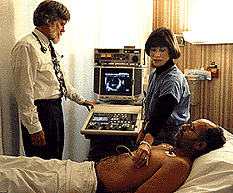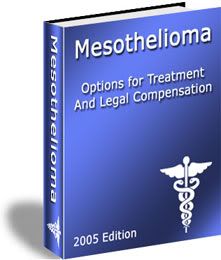Extra-pleural pneumonectomy for malignant pleural mesothelioma.
Title
Extra-pleural pneumonectomy for malignant pleural mesothelioma: the risks of induction chemotherapy, right-sided procedures and prolonged operations.
Source
European Journal of Cardio-Thoracic Surgery. 27(3):373-8, 2005 Mar.
European Journal of Cardio-Thoracic Surgery. 27(3):373-8, 2005 Mar.
OBJECTIVE:
With the increasing incidence of malignant pleural mesothelioma and renewed interest in radical surgery as a therapeutic option, we have examined our experience of extra-pleural pneumonectomy, to document the incidence and management of its peri-operative complications.
METHODS:
This analysis was conducted using prospectively entered data contained within the departmental database, with additional information from retrospective case note review. Details of patient selection criteria and operative modifications are included.
RESULTS:
Over a 59-month period, extra-pleural pneumonectomy was carried out on 74 patients (66 men; 8 women; median age 57 years). Fifteen patients (20%) received cisplatin-doublet induction chemotherapy. The majority (80%) of patients had epithelial tumours and 85% of patients had disease in International Mesothelioma Interest Group stages III and IV. The 30-day post-operative mortality was 6.75% (five patients) and significant morbidity was recorded in 47 patients (63%). Major complications included those of technical origin (diaphragmatic patch dehiscence 8.1%; chylothorax 6.7%; intra-thoracic haemorrhage 6.7%; bronchopleural fistula 6.7%), cardiovascular morbidity (atrial fibrillation 17.5%; mediastinal shift with subacute tamponade 10.8%; right ventricular failure 4%; pulmonary embolus 2.7%) and respiratory morbidity (pneumonia 10.8%; acute lung injury 8.1%). Admission to intensive care was required in 19 patients (26%). Univariate analysis identified the incidence of acute lung injury and mediastinal shift to be significantly associated with induction chemotherapy. In addition to this, laterality of operation influenced respiratory morbidity and admission to intensive care. Finally, prolonged operations (greater than the median) were associated with an increased risk of technical and gastro-intestinal complications.
CONCLUSIONS:
Extra-pleural pneumonectomy is associated with a high rate of morbidity, but an acceptable mortality rate can be achieved with increasing peri-operative experience. Surgery following induction chemotherapy requires extra vigilance for the development of post-operative respiratory complications.




0 Comments:
Post a Comment
<< Home